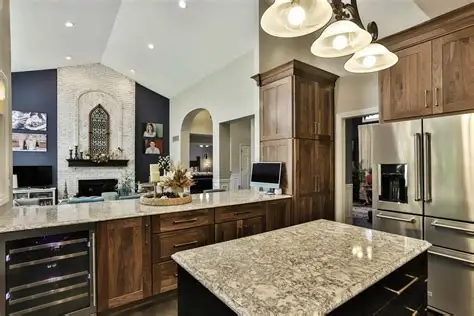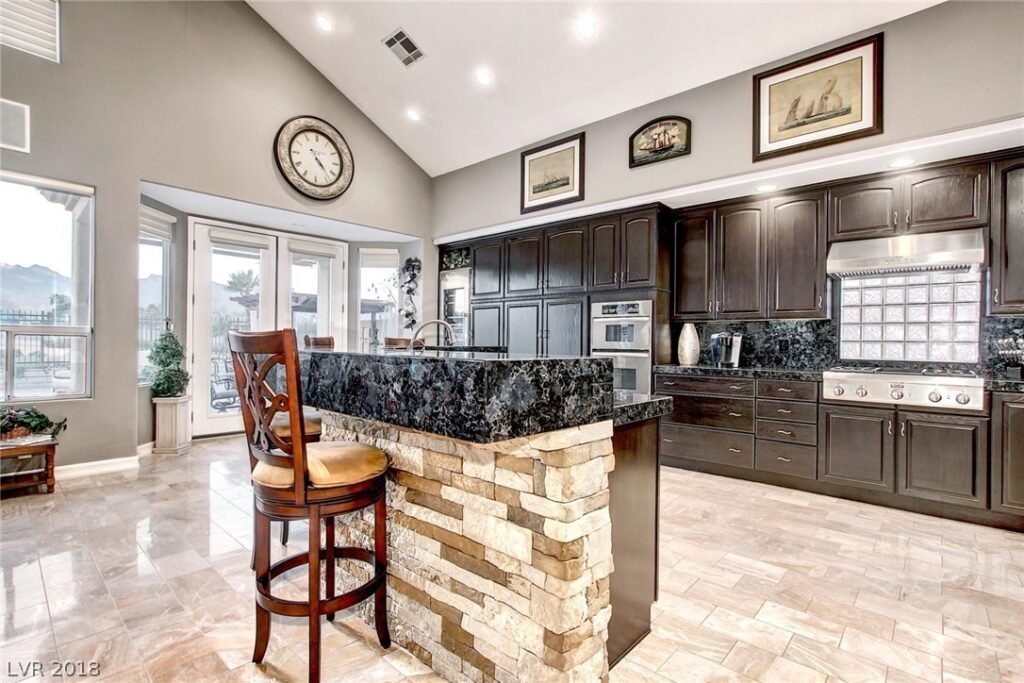Granite is one of the most recognizable and widely used natural stones in both geology and interior design. Known for its durability, aesthetic appeal, and wide color variations, granite has become a cornerstone of countertop materials and architectural applications. But when it comes to classifying this rock, many wonder: Is granite a metamorphic rock? In this article, we’ll explore that question by examining the origins, composition, and formation of granite, and how it compares to other rock types.

Understanding Granite: The Basics
What Is Granite?
Granite is a coarse-grained igneous rock primarily composed of quartz, feldspar, and mica. It forms deep beneath the Earth’s surface through the slow crystallization of magma. This slow process gives granite its characteristic interlocking texture and visible mineral grains.
Granite stone is used globally in construction, sculpture, monuments, and particularly as a high-end material for countertops in both kitchens and bathrooms.
Characteristics of Granite
- Color Range: From white and black granite countertops to grey, pink, and blue hues.
- Texture: Coarse-grained with visible crystals.
- Hardness: Very hard and scratch-resistant.
- Durability: Resistant to heat, stains, and moisture when sealed properly.
Learn more about industrial lifting systems like a jib crane that facilitate the transport of heavy granite slabs in fabrication shops.

Is Granite a Metamorphic Rock?
Granite’s Geological Classification
No, granite is not a metamorphic rock. Granite is classified as an igneous rock, specifically an intrusive igneous rock. This means it forms when molten rock (magma) cools and solidifies beneath the Earth’s surface. Its coarse-grained texture results from the slow cooling process, which allows large crystals to develop.
Why Granite Is Often Confused with Metamorphic Rocks
Granite can undergo metamorphism under extreme heat and pressure, transforming into a rock called granite gneiss—a true metamorphic rock. This process might explain the confusion, but original granite, as quarried and used in construction, remains igneous.
Related Article:
Read about is granite metamorphic? to explore this distinction in more depth.
Comparing Granite with Other Rock Types
Granite vs Sedimentary Rocks
Granite and sedimentary rocks are fundamentally different in their formation. While granite is formed from magma, sedimentary rocks like limestone or sandstone form through the accumulation and compaction of sediments.
🔗 Learn more: Is granite a sedimentary rock?
Granite vs Metamorphic Rocks
Metamorphic rocks such as marble or schist form from existing rocks that undergo transformation due to heat, pressure, or chemical processes. Granite does not undergo this transformation in its natural state unless subjected to geological metamorphism.
Natural vs. Engineered Granite
Natural granite is cut from quarries, while engineered granite is manufactured from crushed stone and resins. Both are widely used in countertops but differ in durability and appearance.
Granite Countertops and Home Use
Aardwolf Granite Collection
The Aardwolf granite countertop collection offers premium granite slabs ideal for both residential and commercial spaces. Whether you’re designing a minimalist kitchen or a luxurious bathroom, Aardwolf has high-quality options.
- Aardwolf premium granite slabs
- Aardwolf granite installation services
- Aardwolf granite pricing guide
- Best Aardwolf granite colors
Granite in Kitchens and Bathrooms
- White granite countertops: Brighten your kitchen or bath with a clean, modern look.
- Black granite countertops: Provide striking contrast and elegance.
- Pairing granite with cabinet colors: Natural stone allows for versatile styling.
Maintenance Tips
- Clean granite countertops with pH-neutral cleaners.
- Sealing granite helps prevent staining and bacteria buildup.
- Polishing granite surfaces restores luster.
- Repairing chips in granite is possible with resin or epoxy kits.
🛠️ Read more:
Common Questions About Granite
What Is Granite Geology and Composition?
Granite is composed of:
- Quartz (20-60%)
- Feldspar (10-65%)
- Mica and other minerals
These minerals give granite its rich color and resilience.
Is Granite Better Than Other Countertop Materials?
- Granite vs quartz countertops: Granite is 100% natural while quartz is engineered. Quartz is more uniform, while granite has natural patterns.
- Granite vs marble: pros and cons: Granite is harder and more stain-resistant.
- Granite vs soapstone durability: Granite generally outlasts soapstone in busy kitchens.
- Granite better than concrete countertops: In terms of aesthetics, heat resistance, and resale value—yes.
Conclusion: Granite Is Igneous, Not Metamorphic
To summarize, granite is an intrusive igneous rock, not a metamorphic rock. Its unique characteristics, geological origins, and versatility in construction make it a top choice for both scientific and practical applications. Understanding its true nature ensures better care and smarter design decisions for your home or commercial projects.
🧰 Bonus Tip: Learn how to handle granite safely using tools like a suction cup.

